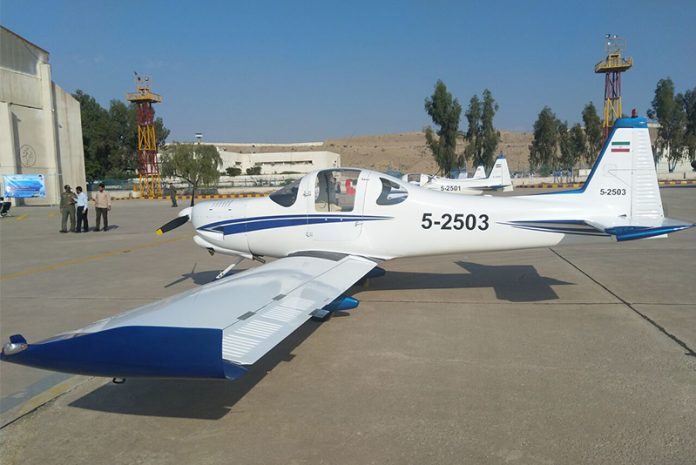The Islamic Republic of Iran Navy Aviation (IRINA) is the air branch of the Islamic Republic of Iran Army that came into being in the early 1980s after the fall of the Shah.
Iranian military expenditures declined
Restrictions on the sale or transfer of US-made parts continue to play a key role in handicapping Iran’s efforts to keep its aircraft operational. Iranian military expenditures declined by 9.5 percent in 2018 compared to the previous year due to massive economic problems caused by US-imposed sanctions.
Tehran has had to therefore increasingly depend on the development of domestic technologies and industries for its military needs.
The Chakavak
At the end of last year, three Chakavak (Lark) basic trainer aircraft were introduced into IRINA service at the Bandar Abbas Air Base.
Developed from the two-seat Parandeh Abi (Blue Bird) monoplane manufactured in Tehran by the H.F Dorna, which was the first all-composite aircraft produced in Iran. The type has been used for pilot training by the Iranian Police.
The Chakavak, powered by a 114hp (85kW) Rotax 914F3 piston engine driving a three-blade variable-pitch MT propeller, has a top speed of 152 knots (282km/h) at service ceiling of 14,000ft (4,265m) and a useful range of 540 nautical miles (1,000km).
IRIAF Flying Training School
To date, all the Iranian services’ pilot training is conducted at the IRIAF Flying Training School at the 11th Tactical Air Base located at Teheran-Ghale Morghi, where a fleet of 25 MFI-17 Mushshak operated for basic training.
As the IRINA has very few fixed-wing aircraft, all of them multi-engined F27s and Falcon 20s, the Chakavak’s stated supplementary role of surveillance may be more important to the IRINA, although the three aircraft seen at Bandar Abbas were not fitted with any type of sensors.
by David Oliver













